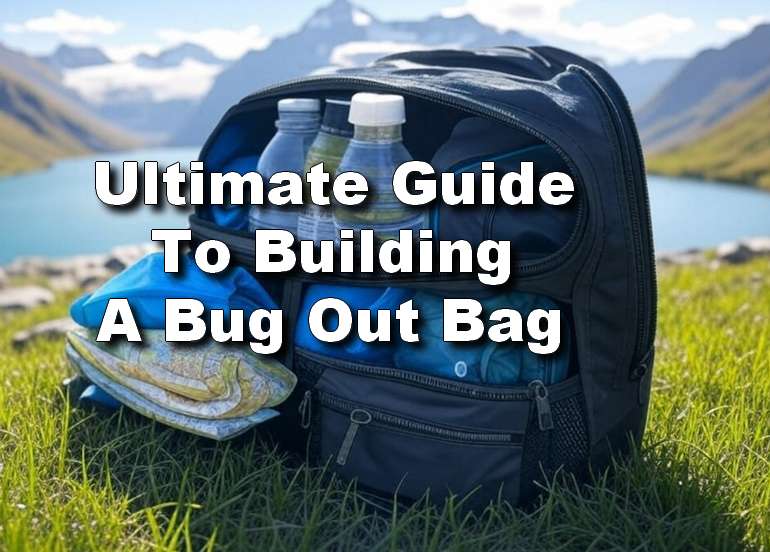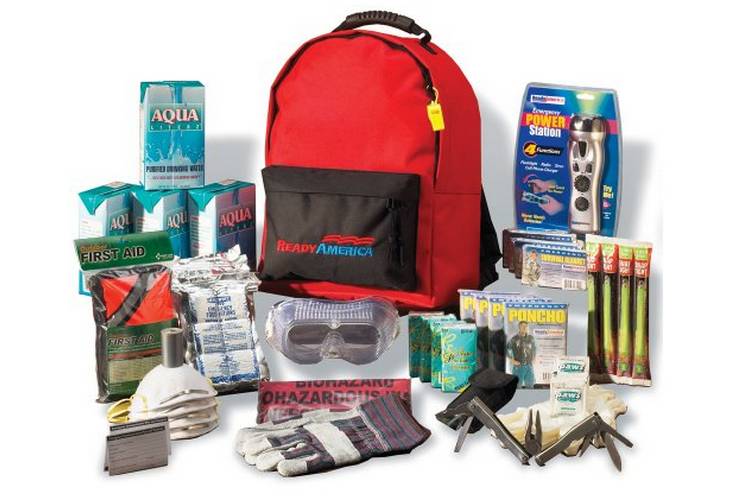- 105
- 106shares
- Like
- X
- Digg
- Del
- Tumblr
- VKontakte
- Buffer
- Love This
- Odnoklassniki
- Meneame
- Blogger
- Amazon
- Yahoo Mail
- Gmail
- AOL
- Newsvine
- HackerNews
- Evernote
- MySpace
- Mail.ru
- Viadeo
- Line
- Comments
- Yummly
- SMS
- Viber
- Telegram
- Subscribe
- Skype
- Facebook Messenger
- Kakao
- LiveJournal
- Yammer
- Edgar
- Fintel
- Mix
- Instapaper
- Copy Link

Creating a Bug Out Bag (BOB) survival kit is a practical way to prepare for emergencies, such as natural disasters, power outages, or any situation. Most homes have some emergency supplies, but what if you get stuck in a traffic jam or disaster strikes while on the road? Bridges will be closed, traffic will come to a standstill, and you will need to survive until you can make your way home. A Bug Out Bag is a backpack or duffle bag with enough supplies to last for seventy-two hours after an emergency or disaster. Here’s a step-by-step guide to making one:
Step 1: Choose the Right Bag
What Type of Bag: A sturdy and comfortable backpack is essential. Look for a durable option, such as a military-style or hiking backpack, with multiple compartments and padded straps.
How Big a Pack: Don’t go overboard; keep the weight to your carrying ability. Bug Out Bags are designed for short-term survival while you go home. 25-35 pounds is a good target.

Step 2: Assemble Your Bug Out Bag
Focus on the survival basics: water, food, shelter, warmth, and safety. Here’s a breakdown:
Water: At least 1 liter of water daily. A stainless steel water bottle can also be used to boil water. Pack a portable water filter, purification tablets, or a UV water purifier.
Food: Non-perishable, high-calorie, lightweight options. Energy bars, freeze-dried meals (e.g., Mountain House), nuts, dried fruit, or jerky
Shelter & Warmth: Wool blanket, emergency mylar blanket, or a lightweight sleeping bag. Optional: a poncho or rain jacket and a hat.
Fire & Light: Waterproof matches or a lighter. LED headlamp with extra batteries, plus a small backup flashlight or glow sticks.
First Aid & Health: A compact kit with bandages, antiseptic wipes, painkillers, gauze, and medical tape. Personal prescriptions for at least 3 days, plus basics like ibuprofen or antihistamines. Travel-size toothbrush, toothpaste, hand sanitizer, wet wipes, and a small towel.
Tools & Safety: Fixed-blade or folding knife, Multi-tool, Pepper spray, and a small GPS or phone with offline maps
Personal & Practical Items: ID and emergency contacts in a waterproof bag. A fully charged phone and a hand-crank radio as a backup. Duct tape, zip ties, a sewing kit, and a whistle for signaling.
Once you have assembled your bag, throw it in the trunk of your car or draw it on your office desk; hopefully, you will never need to use your Bug Out Bag, but if an emergency does happen, it will be one of the first things you look for.

Example Bug Out Back Setup
This setup keeps you mobile and self-sufficient for 72 hours. Adjust based on your location, skills, and risks.
3-day supply of food and water
Portable radio and extra batteries
First aid kit and handbook
Emergency lighting/matches
Pen, paper, and tape
Sturdy shoes/ Gloves
Change of clothing and a hat
Fixed-blade and folding knife
Plastic tarps or bags for shelter and water collection
3-day supply of any medications you take regularly
Personal hygiene supplies (including toilet paper)
Pre-Made Survival Bags
Pre-made survival bags can be cost-effective, especially if you don’t have the time to make your bag. Prices range from $30 for basic kits to $300 for premium kits. Survival experts design pre-made kits to cover essentials and are ready to grab and go; there is no need to assemble them. Here are some popular brands. ReadyWise, Uncharted Supply Company, and Redfora. (These are not affiliate links.)
Summary:
Once you realize how simple creating a basic emergency kit is, consider designing a more extensive bag or purchasing a pre-made one. When assembling or buying Bug-Out Bags, remember that they are designed for three days and should not be too heavy, especially if you need to walk. The primary purpose of a Bug-Out Bag is to help you get home following an emergency or disaster. Remember to stay prepared and safe!
California Road Trip Ideas
- 105
- 106shares
- Like
- X
- Digg
- Del
- Tumblr
- VKontakte
- Buffer
- Love This
- Odnoklassniki
- Meneame
- Blogger
- Amazon
- Yahoo Mail
- Gmail
- AOL
- Newsvine
- HackerNews
- Evernote
- MySpace
- Mail.ru
- Viadeo
- Line
- Comments
- Yummly
- SMS
- Viber
- Telegram
- Subscribe
- Skype
- Facebook Messenger
- Kakao
- LiveJournal
- Yammer
- Edgar
- Fintel
- Mix
- Instapaper
- Copy Link

Leave a Reply